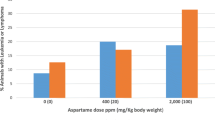Abstract
Selenium (Se), an essential trace element, is incorporated into seleno-proteins as selenocysteine using insertion machinery, including UGA codon and selenocysteine insertion sequence (SECIS) element in the 3 untranslated region (3′-UTR) of mRNA. To assess the biological effects of tumor cells exposed to the elevated, but nontoxic Se level on glutathione peroxidase (GP×1 [cellularar] and GP×3 [extracellular]) thioredoxin reductase (TrxR), and selenoprotein P (SeP) mRNA expression, we introduced a semiquantitative reverse transcription-polymerase chain reaction technique for each selenoprotein transcript using β-actin as a reference housekeeping gene in mouse fibroblasts (WEHI 164). Cell lines were cultured with 1.0, 2.5, and 5.0 ng of Se in 1 mL of medium for 3 and 7 d, apart from the control cell line with standard medium. It was found that Se exerts a statistically significant (p<0.05) effect only on GP×3 mRNA, referred to as the optical density (OD) ratio (GP×3/ β-actin). Moreover, the lowest Se level affected GP×3 mRNA expression more strongly than its highest concentrations. In an in vitro model applied in this study, GP×3 gene expression is most specific for Se supplementation.
Similar content being viewed by others
References
O. A. Levander, Clinical consequences of low selenium intake and its relationship to vitamin E, Ann. NY Acad. Sci. 393, 70–82 (1982).
J. M. Fox, Selenium: nutritional implications and prospects for therapeutic medicine, Methods Find. Exp. Clin. Pharmacol. 14, 275–287 (1992).
D. Behne and A. Kyriakopoulos, Mammalian selenium-containing proteins, Annu. Rev. Nutr. 21, 453–473 (2001).
J. Fleming, A. Ghose, and P. R. Harrison, Molecular mechanisms of cancer prevention by selenium compounds, Nutr. Cancer 40, 42–49 (2001).
J. E. Hesketh and S. Villette, Intracellular trafficking of micronutrients: from gene regulation to nutrient requirements, Proc. Nutr. Soc. 61, 405–414 (2002).
D. L. Hatfield and V. N. Gladyshev, How selenium has altered our understanding of the genetic code, Mol. Cell. Biol. 22, 3565–3576 (2002).
R. R. Jameson, B. A. Carlson, M. Butz, K. Exer, D. L. Hatfield, and A. M. Diamond, Selenium influences the turnover of selenocysteine tRNA[Ser]Sec in Chinese hamster ovary cells. J. Nutr. 132, 1830–1835 (2002).
S. Weiss-Sachdev and R. A. Sunde, Selenium regulation of transcript abundance and translational efficiency of glutathione peroxidase-1 and-4 in rat liver, Biochem. J. 357, 851–858 (2001).
R. D. Baker, S. S. Baker, K. LaRosa, C. Whitney, and P. E. Newburger, Selenium regulation of glutathione peroxidase in human hepatoma cell line Hep3B, Arch. Biochem. Biophys. 304, 53–57 (1993).
M. B. Hansen, S. E. Nielsen, and K. Berg, Re-examination and further development of a precise and rapid dye method for measuring cell growth/cell kill, J. Immunol. Methods 119, 203–210 (1989).
S. El-Mouatassim, P. Guerin, and Y. Menezo, Expression of genes encoding antioxidant enzymes in human and mouse oocytes during the final stages of a maturation, Mol. Hum. Reprod. 5, 720–725 (1999).
K. Waters, S. Safe, and K. W. Gaido, Differential gene expression in response to metoxychlor and estradiol through ERα, ERβ, and AR in reproductive tissues of female mice, Toxicol. Sci. 63, 47–56 (2001).
K. Nishimura, K. Matsumiya, A. Tsujimura, M. Koga, M. Kitamura, and A. Okuyama, Association of selenoprotein P with testosterone production in cultured, Leydig cells, Arch. Androl. 47, 67–76 (2001).
H. Kawai, T. Ota, F. Suzuki, and M. Tatsuka, Molecular cloning of mouse thoredoxin reductase, Gene 242, 321–330 (2000).
R. Brigelius-Flohe, Tissue-specific functions of individual glutathione peroxidases, Free Radical Biol. Med. 27, 951–965 (1999).
V. N. Gladyshev, V. M. Factor, F. Housseau, and D. L. Hatfield, Contrasting patterns of regulation of the antioxidant selenoproteins, thioredoxin reductase, and glutathione peroxidase, in cancer cells, Biochem. Biophys. Res. Commun. 251, 488–493 (1998).
D. B. Mansur, H. Hao, V. N. Gladyshev, et al., Multiple levels of regulation of selenoprotein biosynthesis revealed from the analysis of human glioma cells, Biochem. Pharmacol. 60, 489–497 (2000).
K. B. Hadley and R. A. Sunde, Selenium regulation of thioredoxin reductase activity and mRNA levels in rat liver, J. Nutr. Biochem. 12, 693–702 (2001).
C. D. Hough, K. R. Cho, A. B. Zonderman, D. R. Schwartz, and P. J. Morin, Coordinately up-regulated genes in ovarian cancer, Cancer, Res. 61, 3869–3876 (2001).
Author information
Authors and Affiliations
Rights and permissions
About this article
Cite this article
Reszka, E., Gromadzinska, J., Stanczyk, M. et al. Effect of selenium on expression of selenoproteins in mouse fibrosarcoma cells. Biol Trace Elem Res 104, 165–172 (2005). https://doi.org/10.1385/BTER:104:2:165
Received:
Accepted:
Issue Date:
DOI: https://doi.org/10.1385/BTER:104:2:165




